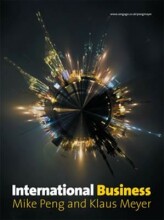Behind the Supply Curve: Input and costs - Two key concepts: Marginal Cost and Average Cost - Average Total Cost
12 important questions on Behind the Supply Curve: Input and costs - Two key concepts: Marginal Cost and Average Cost - Average Total Cost
Difference between marginal cost and Average cost?
- Marginal cost tells us how much one more unit is going to cost to produce
- average cost tells us how much the the average or typical, any piece of the product of output would cost
What is the name of curve of the average total cost that corresponds to how it first falls then rises as output increases?
why is it falling first and rising? What doe we call the point in which it changes from falling to rising?
The U shaped average total cost curve
- because with less variable input to begin with it starts falling until it increases when more variable input is employed
- Minimum average total cost
Why is the average total cost U shaped? What are the 2 components used to explain it?
- It U shaped because the variable input increases over time increasing the output
- average fixed cost and average total cost
- Higher grades + faster learning
- Never study anything twice
- 100% sure, 100% understanding
In what direction does the AVC and the AFC move as output rises?
When does the average fixed cost fall? Thin about how the formula works Kittye
What happens to the average variable cost when the output increases? And why?
- the average variable cost rises as output increases., each additional output incurs more variable costs to produce than the previous unit
- Because of diminishing returns to scale
What opposing effects does increasing output have on Average total cost? What are they?
- The spreading effect (fixed cost): the larger the output the greater the quantity of output over fixed cost is spread, leading to a lower fixed cost
- the diminishing returns effect: the larger the output the greater the amount input required to produce additional unites leading to a higher average variable cost
At which level of output is the spreading effect most powerful, high or low? And why? So which effect dominates? So what happens to the graph at these points?
- At low levels of output the spreading effect is very powerful
- because even a small increase in quantity will decrease the fixed cost drastically.
- the spreading effect dominated the diminishing returns effect
- the ATC curve slopes upward
At whic level of output is the diminsishing effects most powerful, high or low? And why? So which effect dominates? So what happens to the graph at these point?
- At high levels the diminishing reterns effect is very power
- because as output is large the variable cost starts becoming more and more costly
- the diminishing returns effect dominates the spreading effect
- the ATC curve slopes downward
Why does marginal cost slope upwards?
Why does the AVC slope upward?, but what is its difference from MC? Why?
- Due to diminishing returns.
- but it is flatter than the MC curve
- because the higher cost of every input is averaged across all outputs not just one of them
Why is the AFC downward sloping?
The question on the page originate from the summary of the following study material:
- A unique study and practice tool
- Never study anything twice again
- Get the grades you hope for
- 100% sure, 100% understanding































